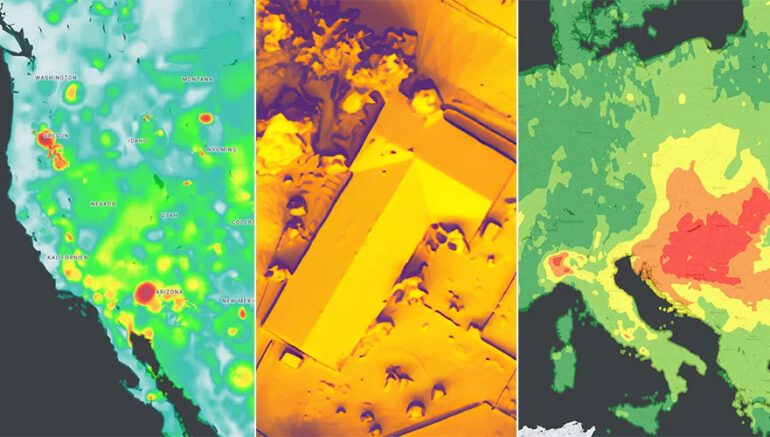TL;DR:
- Google introduces three new APIs leveraging AI and aerial imagery for environmental insights.
- Solar API enables rapid solar panel installation with precise rooftop solar potential data.
- Air Quality API offers real-time air quality data and pollutant forecasts for global locations.
- Pollen API provides current pollen information, allergen data, and tips for allergy management.
- These APIs empower businesses and developers to create tools for environmental impact mitigation.
Main AI News:
In a groundbreaking move, Google has unleashed a trio of innovative Google Maps application programming interfaces (APIs) that hold the power to transform how we comprehend and address environmental issues. These APIs, meticulously crafted at the intersection of artificial intelligence (AI), machine learning, and environmental consciousness, stand as a testament to Google’s commitment to fostering a greener future. By seamlessly integrating aerial imagery, AI-driven insights, and environmental datasets, these APIs facilitate the real-time tracking and mitigation of critical environmental variables. This monumental stride empowers an expansive spectrum of developers, businesses, and organizations to construct bespoke tools for charting and alleviating our ecological footprint.
The foremost among these triumphant endeavors is the Solar API – a technological marvel that harnesses cutting-edge mapping and computational resources to unlock intricate rooftop solar potential data for an impressive tally of over 320 million structures spanning 40 nations, including the likes of the United States, France, and Japan. This herculean feat is accomplished by employing AI algorithms that meticulously extract three-dimensional nuances of roof geometry from aerial vistas, all while factoring in historical weather patterns and energy expenditures. The upshot? Expedited solar panel installations that bask in efficiency.
Venturing further into this environmental odyssey, the Air Quality API takes center stage. A global champion, it lays bare air quality metrics, pollution heatmaps, and granular pollutant insights for over 100 countries worldwide. To achieve this feat, the API seamlessly assimilates and organizes colossal data streams amounting to terabytes per hour, seamlessly knitting together inputs from government sentinel stations, meteorological observatories, sensory networks, and orbiting satellites. With an alchemy of machine learning and real-time traffic data, the Air Quality API adroitly prognosticates various pollutants’ presence within a locality at any given juncture. Such precision empowers healthcare firms, automotive enterprises, and myriad transportation entities to furnish their user base with accurate, timely, and indispensable air quality revelations.
Completing this trifecta of ecological enlightenment is the Pollen API – an ingenious creation designed to decode the enigmatic world of allergens. Covering more than 65 countries, this API unfurls present-day pollen insights for ubiquitous allergens. A treasure trove of localized pollen count data, coupled with intuitive heatmap visualizations, augments our understanding. Revelatory specifics about plant allergens and actionable recommendations for the allergy-afflicted are seamlessly provided. The orchestration behind this botanical revelation? Machine learning’s uncanny ability to pinpoint the precise locations of pollen-yielding plants.
Conclusion:
Google’s latest APIs redefine the landscape of environmental awareness and action. By fusing cutting-edge AI, aerial imagery, and global data streams, these tools allow for unparalleled insights into solar potential, air quality, and pollen distribution. Businesses now possess the means to deliver accurate environmental information to their users, fostering a more sustainable future. This marks a pivotal shift in the market towards technology-driven ecological responsibility and innovation.

